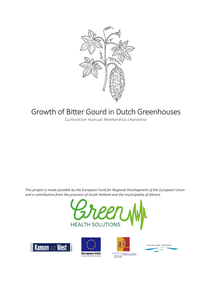very contact with packaging material can affect fingermarks, basically Locard’s exchange principle. Additional wrapping and stacking (multiple) of phones, can decrease the number of DP’s below the limit of identification, 12 DP’s.In conclusion, CSI officers should be aware of the possible effects of wrapping, when considering to preserve DNA traces, or fingermarks.
DOCUMENT
Thermal disinfection is probably the oldest water treatment method ever used. Similarly to other disinfection processes, it targets the inactivation of pathogenic (micro)organisms present in water, wastewater and other media. In this work, a pilot-scale continuous-flow thermal disinfection system was investigated using highly contaminated hospital wastewater as influent without any pre-treatment step for turbidity removal. The results proved that the tested system can be used with influent turbidity as high as 100 NTU and still provide up to log 8 microbial inactivation. Further results have shown energy consumption comparable to other commercially available thermal disinfection systems and relatively low influence on the investigated physical–chemical parameters.
DOCUMENT

Bitter gourd is also called sopropo, balsam-pear, karela or bitter melon and is a member of the cucumber family (Cucurbitaceae). It is a monoecious, annual, fast-growing and herbaceous creeping plant. The wrinkled fruit of the bitter gourd is consumed as a vegetable and medicine in Asia, East Africa, South America and India. The aim of this bitter gourd cultivation manual is to make this cultivation accessible to Dutch growers and in this way be able to meet market demand. In addition, this cultivation manual aims to provide insight into the standardized production of the medicinal ingredients in the fruit.
DOCUMENT

At present, leading international agencies, such as the United Nations Environmental Programme, are largely focused on what they claim to be ‘win-win’ scenarios of ‘sustainable development’ rhetoric. These combine social, economic and environmental objectives. However, as noted by the ‘Scientists’ Warning to Humanity’, environmental integrity is the essential precondition for the healthy functioning of social and economic systems, and thus environmental protection needs to be prioritized in policy and practice. Ecological sustainability cannot be reached without realizing that population growth and economic growth, with attendant increased rates of depletion of natural resources, pollution, and general environmental degradation, are the root causes of unsustainability. This article argues that to strategically address ecological unsustainability, the social, economic and political barriers to addressing the current economic model and population growth need to be overcome. Strategic solutions proposed to the current neoliberal economy are generic – namely, degrowth, a steady-state economy, and a ‘circular economy’. Solutions to demographic issues must be sensitive to the countries' cultural, social, political and economic factors to be effective as fertility differs from country to country, and culture to culture. As discussed here, Mediterranean countries have the lowest fertility in the world, while many countries in Africa, and some in Asia, South America have stable but consistently high birthrates. This is discussed using three case studies - Tanzania, Italy, and Cambodia, focusing on the "best case" policy practice that offers more realistic hope for successful sustainability. https://doi.org/10.1007/s41207-019-0139-4 LinkedIn: https://www.linkedin.com/in/helenkopnina/
MULTIFILE
